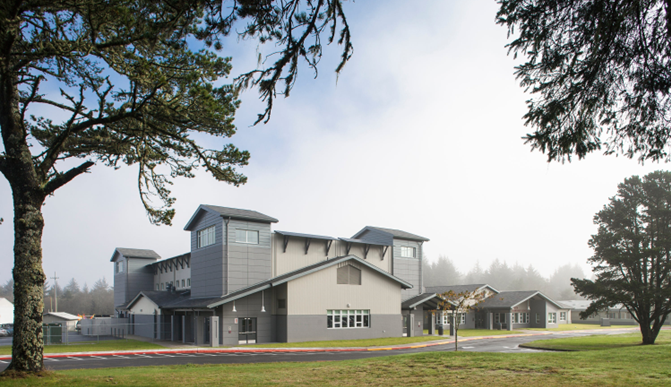The Blueprint Q&A: McKinstry’s Megan Owen
Megan Owen, vice president of enterprise sales and marketing, McKinstry examines the details of the Inflation Reduction Act.

SEATTLE, Wash. (Sept. 30, 2022) – In this Blueprint Q&A,Megan Owen, vice president of enterprise sales and marketing, McKinstry, examines the inner-workings of the Inflation Reduction Act and explores how its provisions will benefit the engineering industry as a whole.
Engineered Systems: The Inflation Reduction Act (IRA) includes tax credits, rule changes, and grant dollars to lower carbon emissions and reduce power bills. But, how exactly will the legislation impact the commercial HVAC/comfort engineering sector?
Owen: First, the IRA renews certainty for the market. We see energy codes strengthening across the country and the regulatory market moving to drive cleaner sources of energy at the local and national levels (e.g., bans on natural gas in cities or 100% clean initiatives across utility territories). The tax incentives, the investment tax credit (ITC) and production tax credit (PTC) in particular, provide much needed financial support for building owners and occupants transitioning their carbon footprint over the next decade and beyond to comply with the changing landscape.
What does that mean in practical terms? Distributed energy resources (DERs), like solar, storage, and heat pumps, will be more affordable for any commercial building owner or residential consumer. And because the cost has often been a barrier to entry, we will see more design and system choices based on the outcomes a client wants instead of solely focusing on first costs.
Additionally, expanding the narrower ITC and PTC to broader clean energy tax incentives in 2025 pushes us beyond traditional renewables to a technology-agnostic approach that leaves the door open for new technologies and, most importantly, levels the playing field for integrated distributed energy resource solutions tailored for a client — their cost effectiveness criteria, programming needs, climate zone, and local utility grid needs, among other things. On its face, this is a game changer for clients, and because we are already designing projects that will go into service in 2025 or later, this has an immediate effect on project financials for a client.
Last, changes to the Energy Efficiency Deduction (179D) for commercial buildings has equal promise to change the game for the millions of square feet of new and existing building stock that needs a compelling financial case to go above and beyond energy code. Under the IRA, the maximum allowable benefit for the 179D Energy Efficient Buildings Tax Deduction will expand in 2023 from $1.88 per square foot to $5 per square foot. To qualify, new construction projects and renovated buildings must meet specific energy-reduction requirements.
While there is a path to partial deductions, to be in full compliance buildings must reduce the energy and power cost of interior lighting, HVAC, and hot-water systems by 50% or more than the minimum industry standard.
The IRA includes multiple programs that will drive building retrofits and upgrades, especially around building performance, renewable energy, and clean energy technologies to lower costs, deliver energy resiliency, and strengthen our economy. We are tracking individual opportunities and details as guidance is created but are extremely optimistic about what this means for our industry. It presents a call to action for us to think big and act boldly to accelerate zero-carbon planning, clean energy deployment, and high-performing building retrofits.
Engineered Systems: What is your firm’s initial reaction to the passage of the inflation act?
Owen: The IRA represents an unprecedented opportunity to innovate waste and climate harm out of the built environment. It is the largest investment ever made by the federal government to slow climate change and reduce our reliance on the fossil fuels responsible for our climate crisis.
We celebrate this historic bill. There is a lot in this legislation for our industry to absorb and a lot we still don’t know. But make no mistake, our industry changed overnight, and we are leaning into it. We are excited by the possibilities for where these investments can take a client and the outcomes that will be generated.
Engineered Systems: Which provision(s) is your firm most interested in/planning to utilize? Why/How so?
Owen: The IRA includes multiple programs that will drive building retrofits and upgrades, especially around building performance, renewable energy, and clean energy technologies to lower costs, deliver energy resiliency, and strengthen our economy.
The extended ITC and PTCs present a remarkable opportunity for our clients and communities, especially when it comes to deploying solar, storage, and other distributed energy resources at scale. In particular, the direct pay language is of specific interest for our public-sector clients and tax-exempt clients, allowing them to benefit from incentives that have traditionally not been open to them. With direct pay, public-sector clients and tax-exempt clients will have greater control over the design and goals of their project and more options with project financing that provide better long-term economic benefits compared to third-party ownership models.
Additionally, McKinstrywill work with our clients to leveragethe Greenhouse Gas Reduction Fund, Climate Pollution Reduction Grants,and Environmental and Climate Justice Block Grants. These funding programs will invest billions in projects and programs that address climate action with our disadvantaged communities, which aligns with McKinstry’s long-termAction for Impactgoals.
Overall, we see the IRA programs as a way for clients to accelerate their long-term plans around building performance upgrades, electrification efforts, and decarbonization.
Engineered Systems: How will this legislation impact your firm in the short term? Long term?
Owen: In the short term, this legislation provides the market certainty and funding streams that allow us to confidently ramp up our investments in staff and resources that focus on solar, battery storage, and other distributed energy solutions.
These additional hires will bolster our existing teams across the U.S. already working to support clients as they invest in their infrastructure, reduce operating expenses, and achieve ambitious decarbonization goals. Regardless of where a client is on the spectrum of transformation, this bill enables them to develop a more efficient and resilient infrastructure.
Success cannot be achieved without a short-term and long-term view. We encourage our clients to leverage this opportunity to accelerate their long-term energy resilience and decarbonization efforts. The IRA represents an opportunity to shorten what may have been long-term visions, goals, and plans, if leveraged correctly — whether that be adding solar and renewable energy, stabilizing energy costs, eliminating deferred maintenance, improving services, and more.
Engineered Systems: What impact will this bill have on carbon?
Owen:With the passage of the IRA, our government has invested in a significant and life-changing reduction of carbon emissions, which will decrease by roughly 40% by 2030. While we would remain vigilant in our guiding principles, without this legislation, efforts to increase reductions would likely plateau at a level we must not be satisfied with.
Engineered Systems: Does your firm intend to increase activity in any of these areas (microgrids, solar, storage, etc.)? Why/How so?
Owen: Yes, in all areas. In lockstep with our clients, partners, and communities we will make the most of this historic investment in our future. The bill opens doors for our clients, many of whom may not have previously had the ability to implement such transformation in the near future, if at all. We will leverage our expertise, experience, and partnerships to craft innovative, tailored, and holistic solutions to include the components that ensure our clients reach their goals.
Engineered Systems: Are there any glaring negative/weaknesses included in the bill you’d like to mention?
Owen: Legislation is never perfect, but the IRA represents a seismic shift that accelerates our industry’s pursuit of these goals. We are incredibly thankful for the programs it provides and the pathways it opens for so many.
Engineered Systems: Obviously, the bill is new, and firms are still attempting to decipher its many layers. Does your firm have any questions regarding the bill?
Owen:Everyone has questions at this point. We are working diligently to understand all the opportunities within the IRA for our clients. That includes leveraging our partnerships and networks to dive into tax law, finance, and project guidance while we wait for official directives to come out of the Biden administration. This legislation represents an unprecedented opportunity our clients have been clamoring for in recent years, and we are committed to being a trusted partner to ensure they see their vision come to life.
Engineered Systems: Anything else you’d like to add?
Owen:Each of us has a role to play in seizing this moment, and time is of the essence. The time is now to unite and leverage our collective knowledge, innovative thinking, and desire for change to lead the way with bold action that has a real and lasting impact on our climate, our communities, and our people, together, building a thriving planet.
*This article first appeared in Engineering Systems Magazine Sept. 30, 2022.
Explore Other News

Denver International Airport Celebrates Earth Day With Bi…
Historic EPC Project progress report shows DEN’s energy and water reductions tracking with Vision 100 Strategic Plan …

Small Coastal School District Implements Onsite Microgrid
Grays Harbor County, Wash. (April 18, 2024) — Western Washington rural K-12 school district, Ocosta, is partnering wi…

McKinstry Releases 2023 Social Impact Report
SEATTLE, WA — McKinstry today released its 2023 Social Impact Report, highlighting its work to create greater equity …